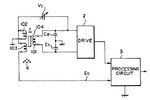danst83
Junior Member level 1
I have a simple question about the coupling coefficient in a basic transformer that also has a capacitor connected between the primary and secondary coils. It seems like the value of that capacitor can affect how the signal from the primary coil couples to the secondary coil. I'm looking for an equation that describes that phenomena. I can also draw a picture if you have a hard time visualizing the circuit.
